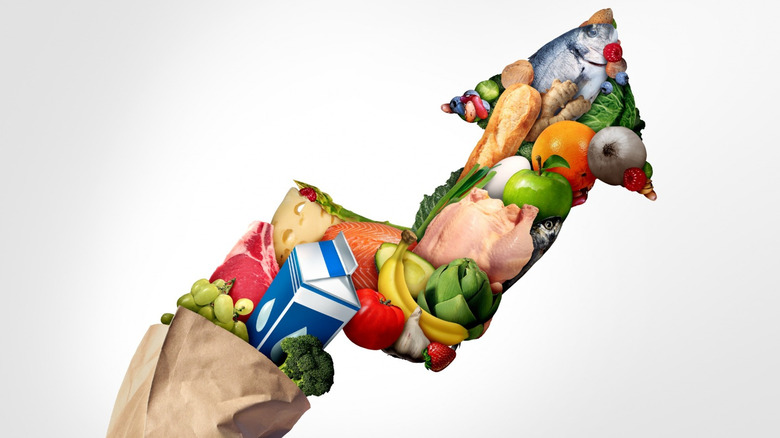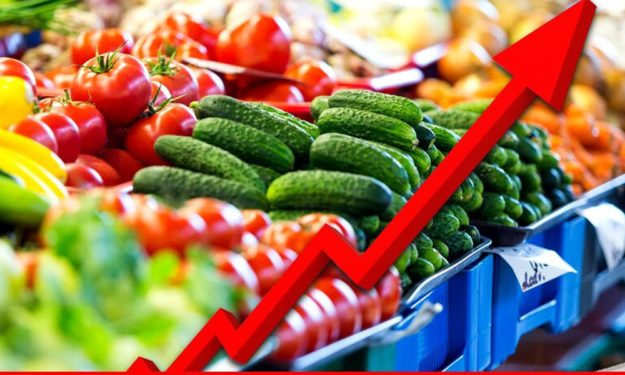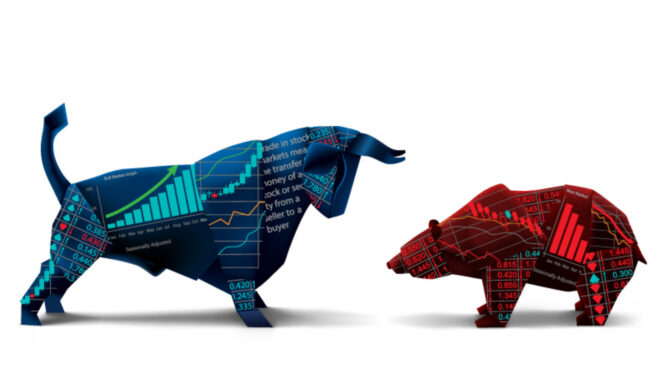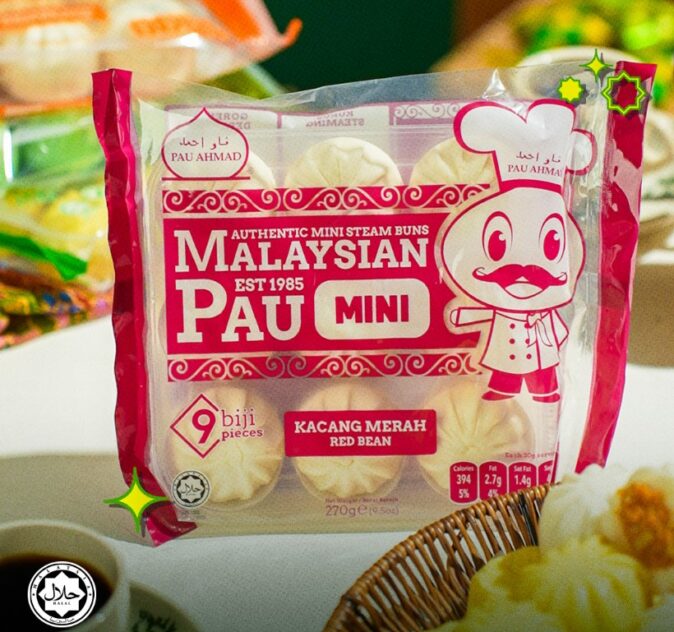INFLATION is hitting food prices hard. Many consumers have noticed their grocery bill creeping up with and wage earners having to pay more for their meals. The Consumer Price Index for “food away from home” and “food at home” that range from vegetables, cereal and meat as well as other animal protein have been rising.
Rising food inflation has eaten into the disposable income of the low-and middle-income households for spending on non-discretionary expenditure.
To put in simply, the following factors explained soaring consumer food inflation (they have stoked global food crisis, especially in emerging economies and low-income countries that have experienced foreign exchange shortages and are more vulnerable to food price shocks):
- Food price inflation has been on the rise years before the pandemic due to both demand and supply driven. Demand was supported by better economic growth, rising purchasing power and population pressure. Food production was constrained by uneven farming output, climate change (poor harvest), rising production costs, diseases, variable quality and yields.
- The prolonged COVID-19 pandemic crisis which inflicted sporadic lockdown and movement restriction measures as well as the supply disruptions caused a spike in consumer food prices. Post re-opening of the economy, the release of pent-up and recovering demand overwhelmed the capacity of supply chains, pushing prices higher.
- Soaring business costs and raw materials used in the production and processing of food as reflected in global food producer prices in 2020-2021 will pass-through onto consumer prices with a time lag of at least six months or less if producers could not absorb increasing costs. Since end-2019 till end-April 2022, the World Bank’s Food price index has increased by 54% – chicken meat up 83.4%, maize (+108.5%) and soya (+88.1%).
- The pandemic has elevated shipping and transport costs as well as that of delivery services to customers.
- The Russia-Ukraine conflict has resulted in further supply disruptions that push higher prices of commodity (corn and wheat), energy prices, industrial materials, fertilisers and animal feed higher for longer. Higher wheat prices will translate into higher food prices while costlier animal feed and fertilisers increased cost of food production.
- Since most food commodities are traded in the US dollar, countries with weaker currencies have seen their food import bill increases.
Inflationary pressure

Rising prices have prompted some countries to implement short-term intervention and administrative measures such as subsidies, price controls and ceiling price, Actions also entail temporary lifting of Approved Permit (AP), import tariffs reduction, and imposition of export restrictions to maintain or improve domestic supplies, hence quelling food price inflation.
Unfortunately, unfavourable global developments have larger forces impacting agricultural market prices, rendering the stop-gap measures to battle food inflation meet with limited success.
Malaysia’s domestic market integration with global market means that our domestic producers and consumers will have to contend with global influences in the supply and demand of food as well as the consequential impact on food prices.
The country’s imports dependency on agricultural commodities to meet domestic demand increased to 13.7% from 7.3% over a 28-year period (1987 to 2015). In 2020, eight items have recorded Imports Dependency Ratio (IDR) exceeding 50.0%: cuttlefish (52.2%), fresh milk (53.5%), round cabbage (63.6%), chilli (72.4%), beef (78.1%), ginger (81.5%), mango (86.2%) and mutton (90.4%).
In 2020, the self-sufficient ratio was 63.0 for rice; fresh milk (65.0), sweet potato (75.6), mackerel (88.2), sardine (80.7), pork (94.9), poultry (98.1) and eggs (115.1).
Food security, price affordability and stability remain a national priority for all. There are no simple solutions but complex tasks to tackle food inflation and food security. Both the Government and private sector need to work together to ensure sustainable food supply.
Action plan
Some of the short-term measures (subsidies and ceiling price controls on food items (for consumers and producers), including fertilisers; exports ban on chicken) come with opportunity costs and mispricing of resources.
- Government’s subsidies and ceiling price to make food affordable will burden the persistent budget deficits – and if it becomes unsustainable – will pose material policy risks to the country’s creditworthiness.
Hence, food subsidies should be made targeted to the vulnerable households through food voucher/stamp or cash assistance. The savings from targeted subsidies can be re-channelled to implement food production programmes.
- Price ceilings and controls cannot address scarcity. Fixing prices at artificially lower levels will merely enforce existing demand patterns, resulting in worse shortages for many consumers down the line.
- For producers, if the price subsidy and ceilings are set at levels below their cost, this will result in the loss of economies of scale and a decrease in supply for consumers who would be willingly pay more than the price ceiling.
During the current supply situation which is severely constrained by sharp price increases in raw materials and also international supply chains disruption, it is unclear how controlling prices would incentivise the suppliers and producers to increase output.
- Global market development influences have caused supply pressures and increasing costs. Restraining price increases for a longer period will not help consumers or alleviate shortages.
In ensuring the sustainability of agriculture sector and food security, we propose the following action plans in the short-and medium-term:
- Stop market intervention: Although the Government’s regulatory interventions are well- intended, they are often counter-productive. They distort the functioning of market and the allocation of resources as well as disincentive towards farm production.
The Government’s primary focus is to create competition (not protection) in every segment of the food supply chains (producer, procurement, stockpiling and food distribution system) so as to reduce costs, curb rent-seeking and plug leakages in the food management system.
- Encourage technology diffusion and smart farming: Both the Government and private sector have to accelerate technology assimilation in food and farming by factoring in environmental sustainability, climate change, crop yields and mechanisation. This will reduce dependency on costly inputs, labour, fertilisers and pesticides as well as stimulate food production.
- Increase arable land for farming: A mere 5.5% of total planted areas (close to 450,000 hectares) was allocated for fruits, vegetables, herbs, species and other crops. On average, there was less than 200,000 hectares land use for fruit crops and less than 100,000 hectares for vegetables and cash crops in 2016-2020. This compared to 5.9 million hectares for oil palm trees and 1.1 million for rubber trees.
- Shoring up all elements of the food supply chain from producers to consumers (planters/growers, food processing industry and food wholesaler and retail distribution sector): Building a more resilient food supply chain and management system that has more capacity to gather, process, move and store in different geographic areas of the country will provide more and better market options for consumers and producers.
- Provide real-time market information: Invest in market information system to provide reliable and timely data of food production, demand and supply, trade and prices. This will send right price signals from producers to consumers; to strengthen the supply chain, stabilise prices, reduce business risk and increase response time. – June 5, 2022
Lee Heng Guie is the executive director at Socio-Economic Research Centre (SERC) Malaysia.
The views expressed are solely of the author and do not necessarily reflect those of Focus Malaysia.











